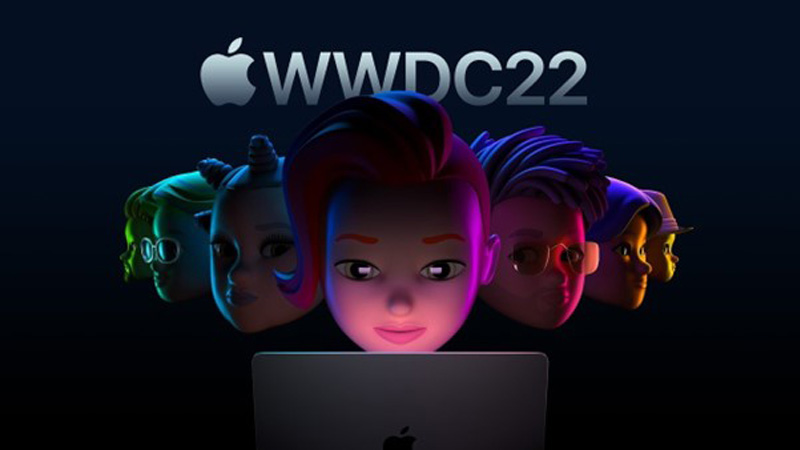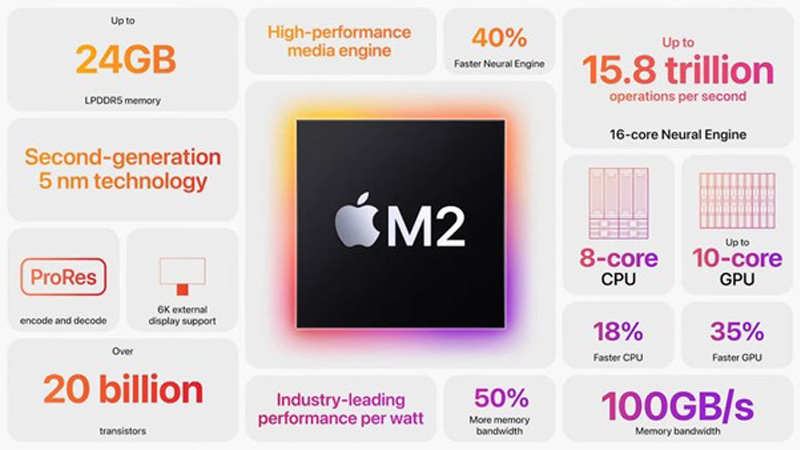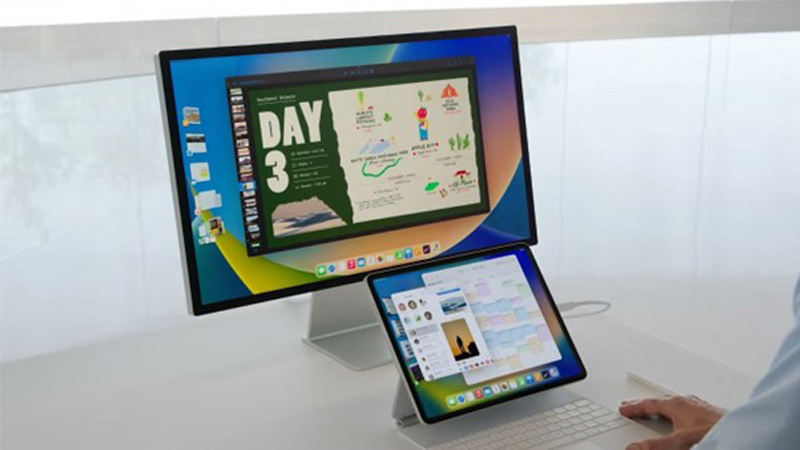Canalys Forums 2022: Partner program strategy for 2022 and 2023
21 June 2022

From 6 to 10 June, Apple announced a variety of updates at WWDC 2022. It unveiled new features for macOS, iOS, iPadOS and watchOS, which are expected to roll out in the second half of 2022.
From 6 to 10 June, Apple announced a variety of updates at WWDC 2022. It unveiled new features for macOS, iOS, iPadOS and watchOS, which are expected to roll out in the second half of 2022. Apple also introduced its next-generation M2 chip, which features in the new MacBook Air and MacBook Pro 13" models. WWDC 2022 was important as the world enters year three of the new way of working, learning and playing. Understandably, Apple has focused most of its attention on productivity tools that enhance the user experience for Mac and iPad users, allowing improved multitasking and collaboration.
Hardware: Apple is beating chipmakers at their own game with the next-generation M2 chip

Designing in-house silicon was Apple’s boldest commitment to the Mac line and the first-generation M1 chipset was a huge success. The vendor has slowly transitioned to in-house-designed chips for all its products since the M1’s release in 2020. As of Q1 2022, Canalys estimates 87% of worldwide Mac shipments used Apple’s own silicon. Apple appears to have hit the jackpot with the M1 chipset, which accounted for more than 50% of all its shipments in 2021. While Apple doesn’t seem to have a problem asking its customers to buy the M1-based Macs, highlighting the M1’s overall competency is harder as its different architecture limits software compatibility. To accommodate consumers’ growing need to carry out heavy tasks more efficiently with the M2, Apple is aiming to improve competency, push users to upgrade and, of course, encourage software developers to build for it. Apple claims the M2 is better than the M1, with an 18% faster CPU, 25% faster GPU and 40% faster neural engine. The M2 will feature in Apple’s newest MacBook Air and MacBook Pro 13" models. But the M2 is unlikely to reach the same level of success as the M1, as Apple is expected to cut shipments of notebooks over the next two years. As consumer demand cools, tapping into its existing base of Intel users looking to upgrade will be Apple’s primary objective.
Software: enhanced multitasking and collaboration powered by macOS Ventura and iPadOS
MacOS Ventura gets new features that will enhance but probably not transform the user experience. Multitasking is now more organized with Store Manager, which allows users to group apps running together on the side. Spotlight, the search bar, gets even smarter with AI and can suggest more relevant results and search for text inside images. The Mail app gets updates that allow users to unsend, schedule send and set reminders. This is welcome as people nowadays spend much more time using email at work, given they actually use the pre-installed Mail app instead of third-party providers. Another task heavily used since lockdown is video conferencing. Apple has introduced the Continuity camera, enabling people to use their iPhone as their webcam. It’s a clever move by Apple to leverage the integration between its devices to increase the value of the whole ecosystem. Those iPhone users who need to do a lot of live streaming or recording but have yet to buy a Mac might be tempted, and vice versa. As Apple is transitioning to fully using in-house chips, macOS Ventura will only support a limited number of Intel models.

The real star of the show for me was iPadOS. It finally received much-awaited updates that can transform an iPad into a compelling laptop replacement, especially for M1-powered models that support smart keyboards. Firstly, the latest OS supports an external monitor display, instead of screen mirroring as in previous releases. Secondly, collaboration is now so much smoother via the Freeform platform, which allows multiple users to simultaneously work on the same file while maintaining communication via FaceTime. Apple has caught up with other platforms, such as those from Microsoft and Google, when it comes to collaboration. Finally, iPadOS also received similar updates to those of macOS Ventura, with Stage Manager, Spotlight and Mail for multitasking. While Canalys forecasts the global tablet market will decline in near term, market leader Apple will undoubtedly be less affected on the demand side.
For Apple, growing together in all categories is always the priority
One thing that Apple never fails to highlight is the seamless cross-platform experience of its ecosystem. Each of Apple’s updates always serves its ecosystem uniformly and helps drive value into new verticals. In Q1 2022, amid global supply and logistics constraints, Apple still managed to launch new MacBooks and iPads, and shipped 22 million desktops, notebooks and tablets worldwide. Apple’s notebooks and tablets are still skewed heavily toward consumers, and Canalys expects consumer demand to slow down until the next refresh cycle. Nevertheless, Apple is still popular among certain commercial subsegments, of which medium (100 to 499 employees) and very large (1,000+ employees) enterprises saw 44% and 53% annual growth respectively in Q1 2022. The latest updates, with their productivity improvements, should sustain this growth.